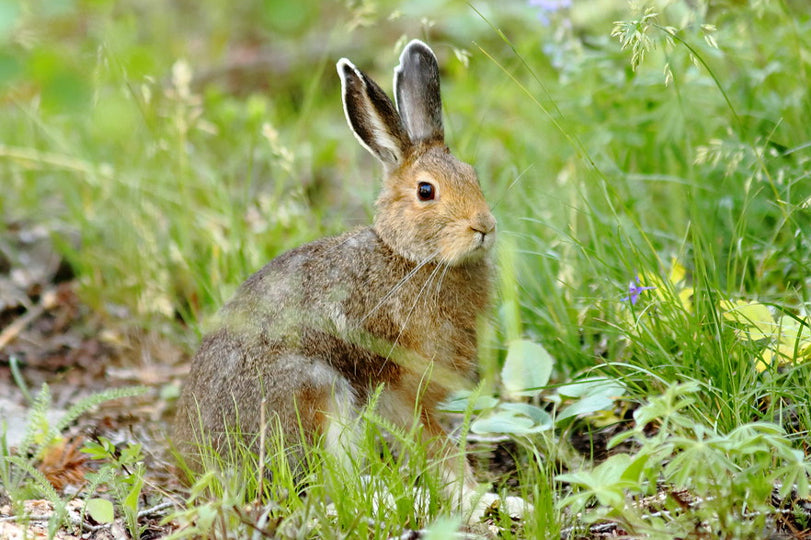Credit: © Bern Krausse
The ecologist Prof. Rudy Boonstra has studied the populations of the boreal forests at length and teaches on the biological consequences of global warming. This makes himself and his team at the University of Toronto in Scarborough well situated t observe differences between 2 geographical locations and the differences we can expect as the well-documented Arctic heating progresses in future.
The two locations are the Yukon, at Kluane Lake and the Fennoscandian region of NW Europe. The boreal coniferous forests there form the largest terrestrial biome on Earth, covering 11% of our land. Typical animals include grey wolf, fox and many rabbits and rodents, with characteristic plants that also illustrate climatic and other differences between the 2 study areas. The understory of European bilberry that dominates much of Finnish and Norwegian forest is replaced in North America with taller shrubs, such as dwarf birch and grey willow. The animals take advantage of the producers in the form of voles in Europe, while snowshoe hares enjoy the Canadian forest understory. The point here is that predators are very important in controlling the whole ecosystem, with lynx producing the classic predator prey relationship with the hare, while weasel and stoat eat the vole species in Finland and elsewhere in Scandinavia.
Despite these characters, there is low species diversity compared to warmer latitudes. Similarities include the dominant spruce trees such as white spruce in the Yukon, Picea glauca but these superficially-similar boreal forests are created by very different climates. The wet winters of Fennoscandia provide deep snow despite the warmer temperatures, at 15-20 oC higher, annually. With twice the precipitation and nearly 50% more depth of snow, the plants and the animals share a very different environment in the winters. Frost is much more severe in its effect in Canada for 2 reasons! Permafrost is the result, while this is lacking completely at the same latitude in Europe.
Of course, these climatic differences have been well known for centuries, contributing to the development of NW Europe generally. Even the snow is totally different , the powder snow in the Yukon being replaced by dense-packed snow and icy crusts in Europe, caused by the thaw/freeze cycles of a relatively mild winter.
Soils are pretty similar, with poor nutrient content, so the trees contain spruce species in both regions. Scots pine joins the Norway spruce (Picea abies) in Scandinavia as jointly dominant, but both regions have aspens and birches. Europe however has half of its primary productivity in the boreal zone contributed by the low shrub layer. Bilberries, crowberries, lingonberry and even reindeer lichens, Cladonia spp, are responsible for this surprising food supply for many species of vole and the relatively common moose, Alces alces.
American snowshoe hares and their red squirrel, Tamiasciurus hudsonicus eat the majority of the production of Yukon forests. Then come the predators. The Canada lynx has become more endangered recently but still illustrates the classic cycle with the snowshoe hare of a predator and its primary prey. The only other common large predator in North America is the coyote also decimating the snowshoe hare populations. The much larger Eurasian lynx is back in place nowadays after large scale extinctions in the 1920s, although the grey wolf is yet to reappear in most of its former habitat. The major mesopredators
are most important in Fennoscandia. They include the ermine and least weasel who dispose of the burgeoning vole herbivore population voraciously.
So insulation of the low understory by deep snow is significant in Europe, giving us niches for voles and their predators. In the Yukon, severe cold and a relatively-warm summer has created a forest ecosystem which is reliant on hares and rabbits and a cold-tolerant Salix (willow) and Betula (birch) understory. The snowshoe hare is able to nibble at these trees sticking up from the snow during the winter, whereas voles remain below the snow and have no Yukon equivalent to the productive bilberries. They thrive better in Finland under deeper snow.
Loss of these habitats and ecosystems looks highly likely as global warming removes the permafrost and melts the winter ice and snow. The authors of this July paper in Bioscience present some worries, especially as the forests have key roles in many parts of the carbon cycle. As well as being affected by global warming, these forests have the potential to greatly increase it. The authors hail from the Universities of British Columbia, Alberta, Toronto (Scarborough) and Tromsà ¸ and Hedmark University College in Evenstad, Norway.










